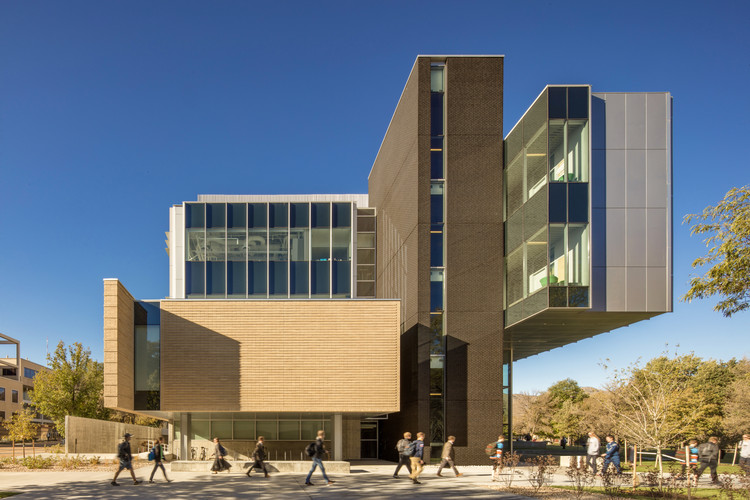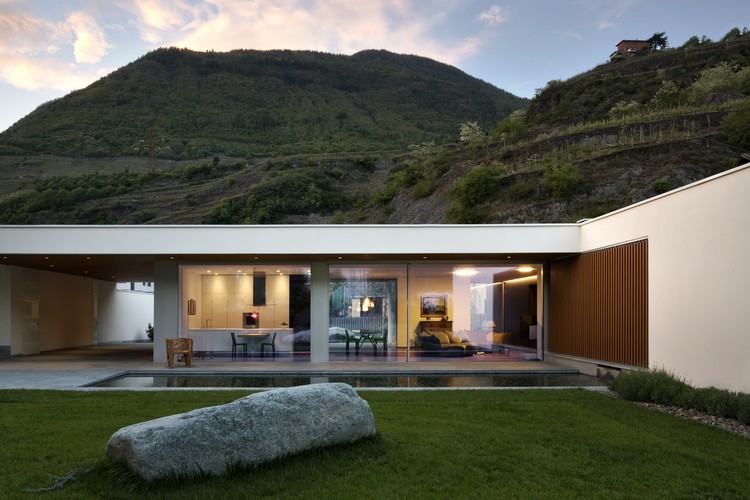Conde Duque Carlos de Riaño Lozano
2013-10-24 00:00
© Miguel de Guzmán
米格尔·德古兹曼


架构师提供的文本描述。1717年,佩德罗·德·里贝拉(Pedro De Ribera)绘制了马德里孔德·杜克兵营的第一个项目。它必须为一项雄心勃勃的计划提供答案,该计划将容纳600多名士兵和400多匹皇家卫队的马。近三个世纪以来,这座建筑一直保持着相同的结构,经过了无数次的考验。最重要的是19世纪后半叶的两场大火,几乎需要它的拆除和重建。修复工作从未完成过。
Text description provided by the architects. In 1717, Pedro de Ribera drew the first project of the Conde Duque barracks in Madrid. It had to provide answers for an ambitious program to house the more than 600 men and 400 horses of the Royal Guard. For almost three centuries the building has maintained the same structure, having overcome countless trials. The most significant ones were two fires in the second half of the 19th Century that almost required its demolition and rebuilding. The restoration was never complete.
© Miguel de Guzmán
米格尔·德古兹曼


2004年,随着计划主任的起草,康德·杜克人的生活开始了一场新的冒险,在整个大楼全面和协调的翻修之后,于2011年完成了工程。在这一刻,这是一场冒险的赌博,因为它是马德里继阿尔卡沙尔(Alcázar)之后最大的建筑。它仍然是这座城市中规模最大、鲜为人知的历史建筑之一。
In 2004, with the drafting of the Plan Director, began a new adventure in the life of the Conde Duque, which finished with the completion of the works in 2011, after a total and coordinated renovation of the whole building. In its moment it was a risky gamble, since it was the largest building in Madrid after the Alcázar, the old royal palace. And it still is one the hugest and less-known historic buildings of the city.
© Miguel de Guzmán
米格尔·德古兹曼


它裸露内部的第一张照片是在花岗岩柱和其他水平上的砖拱的开阔的肚脐,变形的柱子和铆接的横梁。干净和简朴的空间覆盖着实心砖结构。强大的空间需要一个明显的解决方案:保持骨架,删除增加的内容,集中新的干预措施。其目的是实现一个大的中立容器,可以放置新的永恒对象和特定元素。
The first images of its naked interior were open naves of brick arches on granite pillars and at other levels, wrought columns and riveted beams. Clean and austere spaces covered with solid brick structures. The powerful space called for an obvious solution: to maintain the skeleton, to remove additions and to concentrate the new interventions. The aim was to achieve a big neutral container where new timeless objects and specific elements could be situated.
© Miguel de Guzmán
米格尔·德古兹曼


马德里市提出的方案意识到了这些前提,并为这项任务提供了便利。它本质上想要创造互动的场所,多用途的空间和一个小型的活动场所集合(一个音乐厅,一个剧院,一个集会大厅…)。。室内庭院塑造了庞大多样的规划。它们也是一个恢复开放空间和允许室内和室外流动的机会。建筑物的外观仍然非常封闭,但这些庭院提供了一个友好和容易接近的面孔。他们指的是前厅,接近的地方,理解的可能性。
The program proposed by the City of Madrid was aware of those premises and facilitated the task. It essentially wanted to create places of interaction, multi-use spaces and a small collection of venues for the development of activities (a concert hall, a theatre, an assembly hall…). The interior courtyards shape the vast and diverse program. They are also an opportunity to recover open spaces and to allow the indoors and outdoors flow. The building is still very hermetic towards the exterior, but these courts offer a friendly and accessible face. They mean the antechamber, the place of approach, the possibility of understanding.
© Alfonso Quiroga
(阿方索·基罗加)


干预包括两个阶段。第一次是在建筑的南部地区,原来的建筑最真实,里面有展览厅和展览厅。大房间的顺序只会被隐藏新通讯通道的小盲盒所改变。这些独特的作品,如音乐厅、剧院和大会堂,产生了自己的氛围,并给每个环境以自己的触觉。第二阶段是在北部地区进行的,在那里,原来的集装箱在过去几年中得到了广泛的改造。它不那么自由地重组现有的机构,如档案馆、报纸图书馆、观察站和当代艺术博物馆。
The intervention consisted of two phases. The first one took place in the southern area of the building, where the original architecture shows the most authenticity, which houses halls for exhibitions and shows. A sequence of big rooms is only altered by small blind boxes that hide the new communication passages. The unique pieces, like the Concert Hall, the Theatre and the Assembly Hall, generate its own ambiance and give its own touch to each environment. The second phase took place in the northern area, where the original container had been extensively transformed throughout the last years. It reorganized less freely the existing institutions, such as the Archives, the Newspaper Library, the Library, the Observatory and the Museum of Contemporary Art.
© Miguel de Guzmán
米格尔·德古兹曼


一种共同的语言统一了整个建筑。原来幸存下来的建筑被复原并解放了叠加的油漆涂层,实现了均匀和连续的画布。增加的东西被涂成白色,我们让高地告诉我们他们自己的历史。如果表面,包括直线和飞檐,是这个话语的基础,它是空洞提供的细微差别。完美有序,重复的节奏,现在它恢复了垂直比例,它是一个混合木匠铁和木材,尽量减少从外部的影响,而不减去温暖的内部。
A common language unified the whole building. The original structures which had survived were recovered and liberated of superposed coats of paint, achieving a homogeneous and continuous canvas. The additions were painted white and we let the elevations tell us their own history. If the surfaces, including lintels and cornices, are the base of this discourse, it is the hollows what provide the nuances. Perfectly ordered, with a repetitive rhythm, now it recovers the vertical proportion, and it is dressed with a mixed carpentry of iron and wood that minimizes the impact from the exterior without subtracting warmth to the interior.
.jpg)































































.jpg)

.jpg)

.jpg)



Architects Carlos de Riaño Lozano
Location Calle Conde Duque, 28015 Madrid, Spain
Category Institutional Buildings
Technical Architects María del Hierro, Luis García Cebadera
Area 29262.0 sqm
Photographs Miguel de Guzmán, Alfonso Quiroga
























